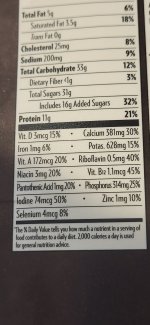Melodi
Disaster Cat
You can also look up old recipes, especially from the United Kingdom and Ireland. By the late 19th century, many households (especially in England) could afford one roast a week, which became "The Sunday Roast." That was almost always cooked over what we now call Yorkshire pudding, a sort of flour-based sponge that sat under the meat and collected the drippings (either oven or fire pit). All but the working men of the household were expected to eat a tiny piece of meat, then fill up on the gravy/dripping-soaked "pudding."
However, this was because the roast would be used for two or three more meals later in the week. The working men normally performed labor or trades like blacksmithing and weaving. They brought in wages, so they got more meat.
A modern version of this can be cutting off a cooked portion of the roast to use in some recipes. Or, since we have freezers today, cut it up before freezing. Enjoy three tiny roasts or roast one piece and use the rest for other things like stews, broths, hash, jerky, etc.
Most here probably do some of this already, but I enjoy getting inspiration from older recipes that demand the meat be cooked because cooked meat keeps longer in an ice box or cool box than raw meat.
However, this was because the roast would be used for two or three more meals later in the week. The working men normally performed labor or trades like blacksmithing and weaving. They brought in wages, so they got more meat.
A modern version of this can be cutting off a cooked portion of the roast to use in some recipes. Or, since we have freezers today, cut it up before freezing. Enjoy three tiny roasts or roast one piece and use the rest for other things like stews, broths, hash, jerky, etc.
Most here probably do some of this already, but I enjoy getting inspiration from older recipes that demand the meat be cooked because cooked meat keeps longer in an ice box or cool box than raw meat.








